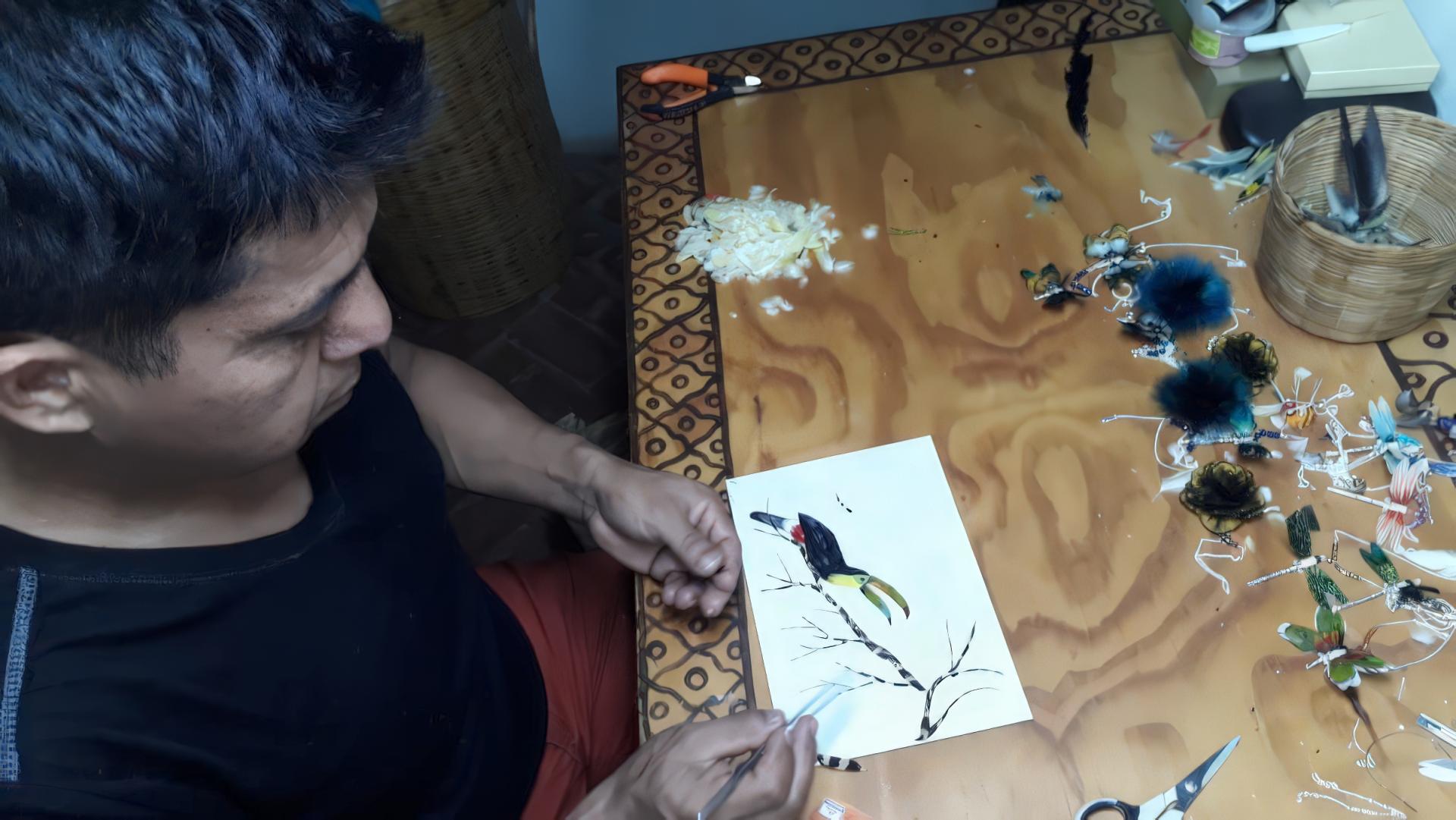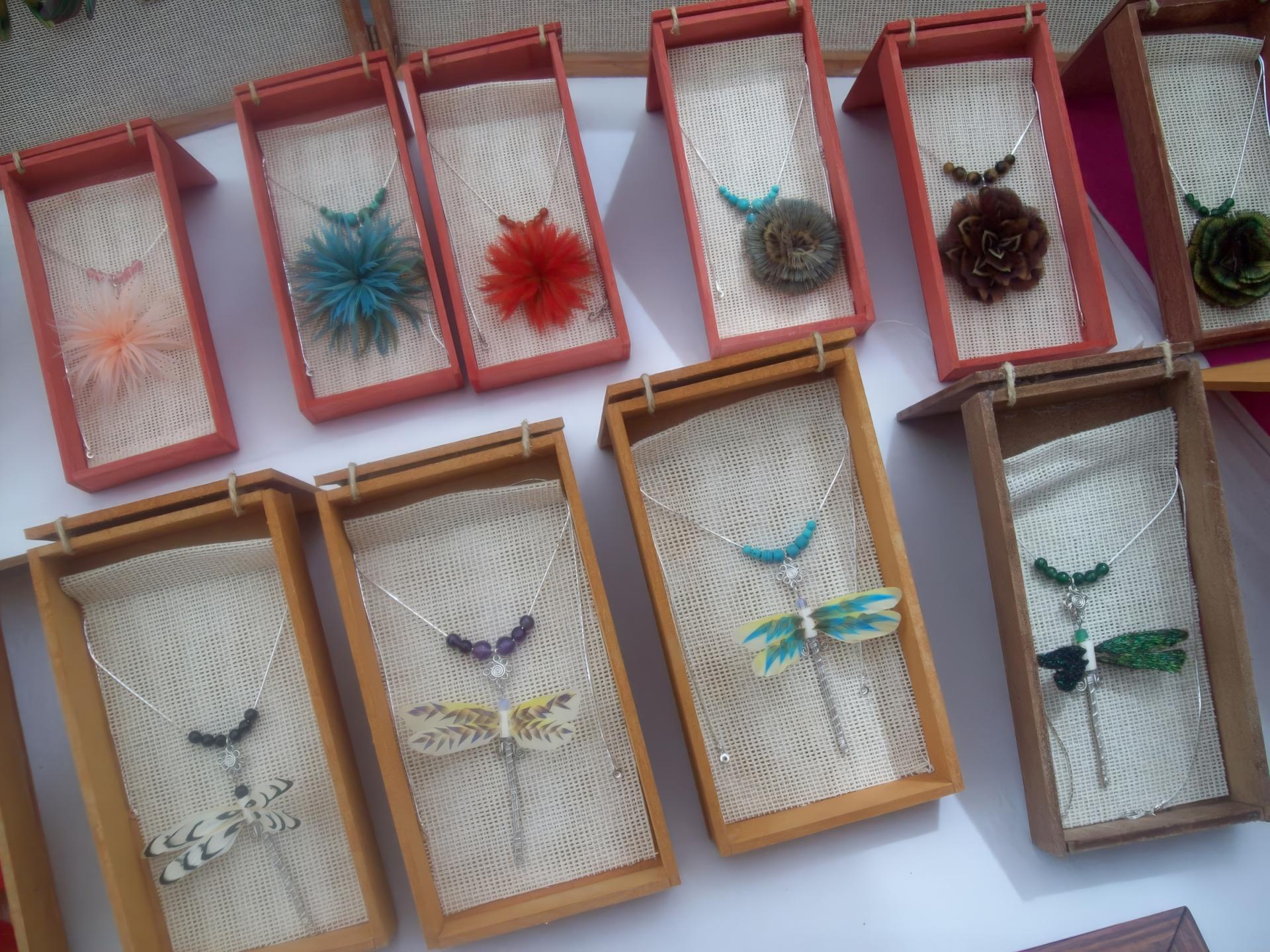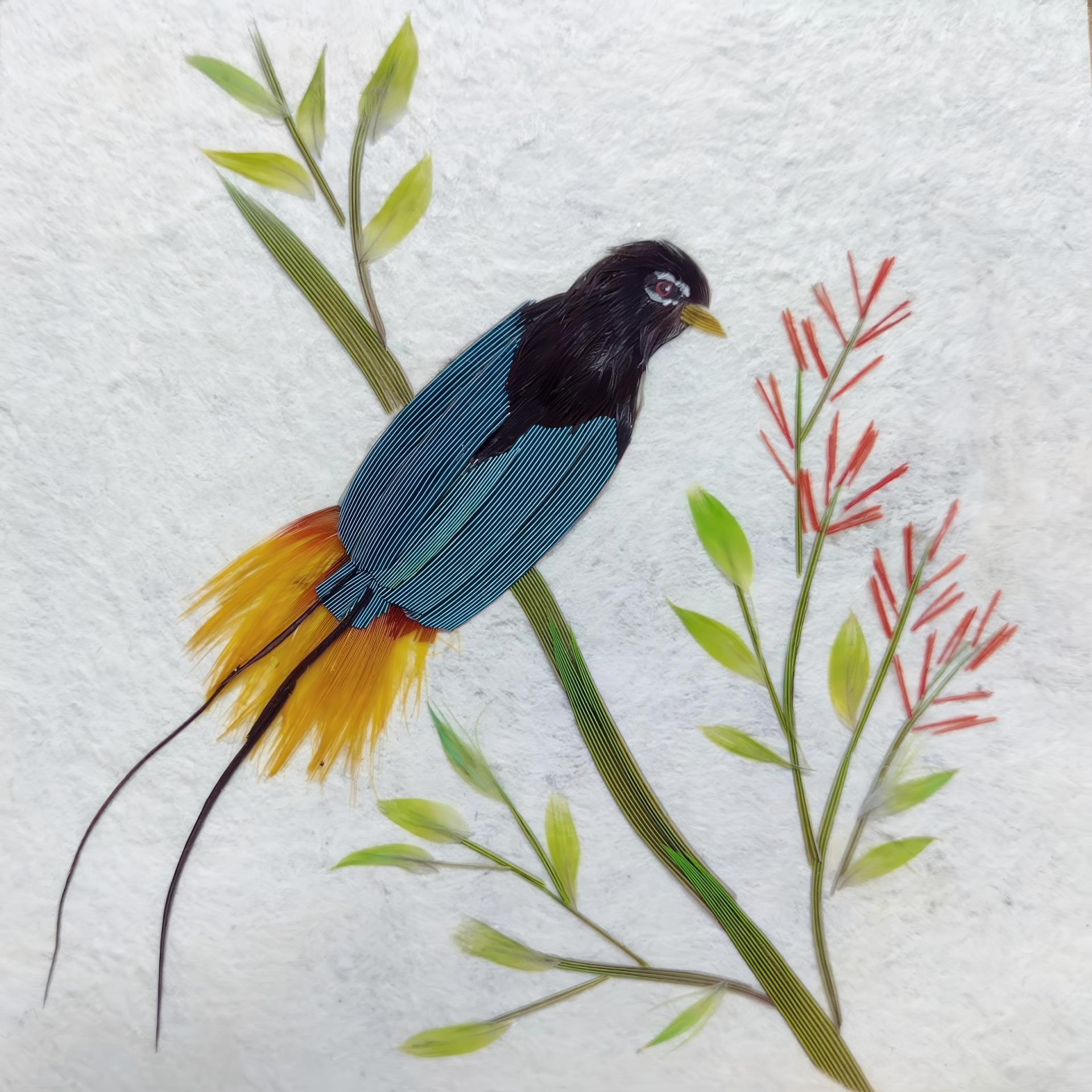
Rubén Flores Apaez (nahua) nació en el estado de Guerrero, México, en una comunidad llamada Cuahuilotla. Él y su familia emigraron al estado de Morelos cuando Flores tenía cinco años. "Desde niño siempre he apreciado y admirado a las aves. Recuerdo las primeras en el corral y algunas silvestres cantando con su color y brillo en las plumas", recuerda. A los 22 años, Flores se unió a un grupo de danza tradicional azteca y mexica en Cuernavaca, Morelos, que le abrió las puertas al arte con plumas. "Todo empezó hace 25 años, cuando aprendía danza tradicional. Empecé a hacer piezas para uso exclusivo de la danza y para nuestro grupo. Con el tiempo, dominé la pluma (de pegamento) y creé otras piezas ornamentales que podía utilizar cualquier persona". Como persona a la que le gustan las plumas, después de investigar las técnicas y los materiales que se utilizaban antiguamente en México, empecé a crear piezas más elaboradas, como paisajes o personas con plumas", dice.

Rubén Flores in his workshop.
Desde hace más de 18 años, Flores trabaja con Gastón Aguilar como parte de Arte plumario Kozamalotl. "Nuestro enfoque actual en nuestro trabajo es principalmente la representación de aves. Hemos tenido la oportunidad de participar en diferentes eventos en México. Al principio participamos en algunos concursos y obtuvimos premios y reconocimientos. Hemos tenido la oportunidad de mostrar nuestro arte en Guatemala, Italia y, en los últimos años, en algunos lugares de Estados Unidos. Nuestro trabajo da continuidad y promueve un arte que se niega a perderse. Con la artesanía expresamos nuestros sentimientos y formas de percibir la vida, y también son fuente de ingresos para nuestras familias", afirma.

Jewelry made out of plumage by Arte Plumario Kozamalotl.
Las plumas han sido utilizadas por muchas culturas Indígenas de todo el mundo con fines ceremoniales, rituales y tradicionales. Flores dice que sus obras representan "El gusto por las aves y su plumaje; la continuidad de un arte que fue muy apreciado y admirado en México y que pocos mantenemos vivo, en cada pieza, la delicadeza, la fragilidad de la pluma, y al mismo tiempo, la belleza que se puede obtener. Cada creación, ya sea decorativa o funcional, representa toda una herencia y tradición con el trabajo de la pluma que se ha trabajado durante siglos en México."
Las plumas para el trabajo de Arte Plumario Kozamalotl son adquiridas en aviarios certificados de Morelos y Quintana Roo. "Todas las plumas utilizadas son recolectadas durante el cambio natural de plumas", dice. "Otras partes son de nuestras aves que criamos en casa; sus plumas también son recolectadas conforme son desprendidas por las aves". Las plumas se utilizan para hacer joyas como pendientes y collares, cuadros y recortables. "Aunque somos pocos los que trabajamos este arte en México, cada uno tenemos nuestras propias técnicas y trabajos. Nuestro trabajo se ha diferenciado por utilizar plumas recolectadas y en colores naturales. Hacemos piezas pequeñas con detalles, como joyería. Luego le damos un toque especial y lo complementamos con plata y piedras reales", dice Flores.
Como muchos artistas Indígenas, Flores y Aguilar se enfrentan a varios retos, como la falta de acceso a servicios básicos, atención médica, transporte y seguridad. En concreto, cita "poder promocionar adecuadamente nuestro trabajo, conseguir bolígrafos con facilidad, la falta de comunicación cuando salimos al extranjero por no dominar el inglés, y la falta de fondos para poder salir a ciertos eventos". Sin dejarse intimidar por estos obstáculos, Flores dice que le da "mucho orgullo poder mostrar sus obras de arte con plumas en eventos como los Bazares de Cultural Survival y participar en este arte ancestral". Cree que cada vez hay más gente que conoce esta forma de arte y, a través de ella, aprenden sobre el cambio de plumaje de todas las aves. "Aunque las plumas de las aves sean algo que mucha otra gente descarta o ignora, para mí son arte y algo que puede dar vida a nuestras creaciones".

All photos courtesy of Rubén Flores.
¡Únase a nosotros en los Bazares de Verano y la Tienda Indígena!
20 y 21 de julio de 2024 Newburyport, MA
27 y 28 de julio de 2024 Tiverton, RI
